Setting the Record Straight on Setting the Record Straight
I recently found an article in Foreign Policy by Stephen M. Walt, a professor of international relations at Harvard University. Although it may be a few years old, it encapsulates a common sentiment on the left today. Driven by a desire to refute any notion of American Exceptionalism, these critics have developed dogmatic talking points that downplay U.S. involvement in World War II while portraying the Soviet Union as the true saviors of humanity.
Walt presents his argument like this:
“Though Americans watching Saving Private Ryan or Patton may conclude that the United States played the central role in vanquishing Nazi Germany, most of the fighting was in Eastern Europe, and the main burden of defeating Hitler’s war machine was borne by the Soviet Union.”
It’s true that most people don’t study history deeply and that Hollywood simplifies complex events. But Walt’s smug, absolutist framing—dismissing any debate on the matter—is far more dishonest than anything Hollywood has produced.
To begin with, the assumption that body counts are the key indicator of success is fundamentally flawed. It’s like saying, “I worked 10 hours, and you only worked 10 minutes, so I must have done the majority of the task,” while ignoring that I was digging with a hand shovel and you had an excavator and a dump truck. The Soviet Union suffered more casualties than any other nation, but high casualty numbers do not equate to military effectiveness or heroism.
Now, let’s examine some pre-war maneuvers and post-war realities that narratives like Walt’s conveniently omit.
A Calculated Collaboration
Long before the Nazis came to power, the Soviet Union played a pivotal role in helping the German military sidestep the restrictions imposed by the Treaty of Versailles. That treaty was meant to keep Germany from rearming after World War I, but both Germany and the Soviet Union had a shared interest in ignoring it. The Soviets provided German military personnel with training facilities, weapons development opportunities, and weapons training that they could not obtain inside Germany.
This collaboration benefited the Soviet Union by allowing its officers to learn modern warfare and logistics at some of the finest schools in Germany. This wasn’t about ideological kinship or keeping the peace; it was a calculated move by both sides to prepare for future wars of aggression.
Unfortunately, this arrangement ultimately fueled Stalin’s paranoia. He came to view these German-trained officers as potential traitors, a suspicion that contributed to his decision to purge his own military leadership prior to Hitler’s invasion of the USSR.
Both of these decisions—to aid the German military and decimate the Soviet officer corps—contributed to the high casualties the Soviets suffered in the war, and neither suggests they deserve the bulk of the credit for winning it. But it gets worse. Much worse.
How to Start a War
Hitler was determined to start a war, and after taking the Rhineland, Austria, the Sudetenland, and Czechoslovakia, Great Britain and France finally understood he could not be appeased. They made it clear that if Hitler invaded Poland—the next country on his list—they would go to war against Germany. The big question was: What would Stalin do? Would he defend Poland’s sovereignty or stand by and do nothing? The answer was surprising to most.
After many years of leading an anti-Fascist coalition, Stalin cut a deal with Hitler—the Molotov-Ribbentrop Pact, so named for the men who negotiated it—and divided up Poland along with the Baltic states, Romania, and Finland. Hitler and Stalin started the war together, with no reservations about using violence to expand their territory and subjugate millions, as long as each could operate freely in their respective spheres of influence.
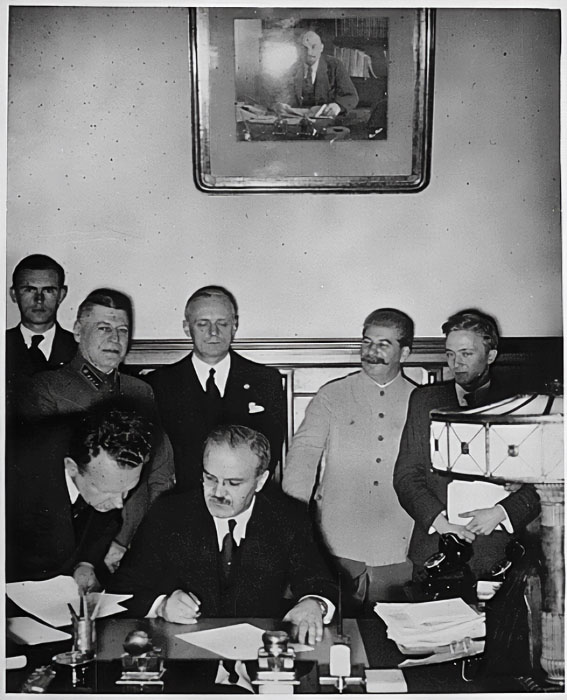
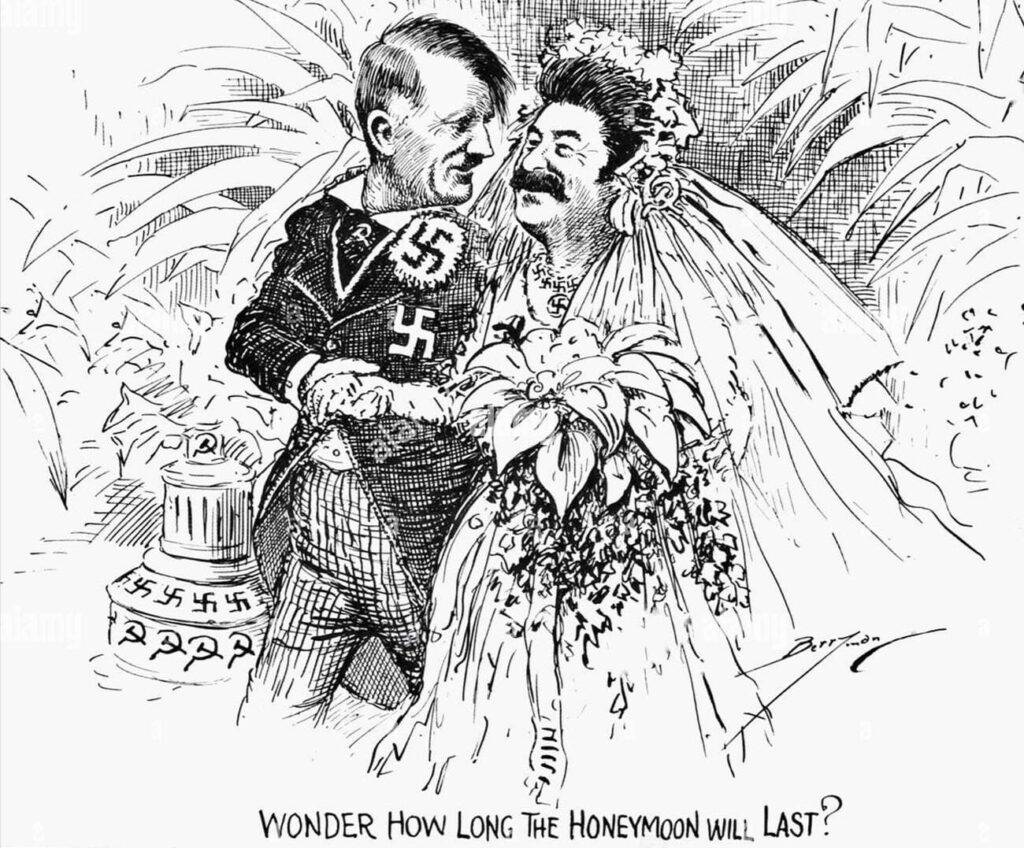
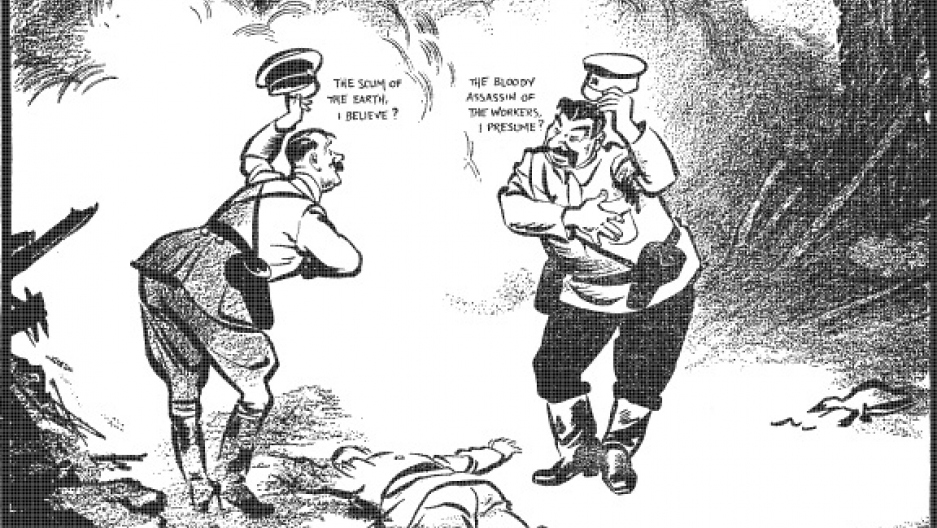
The cooperation went far beyond merely leaving one another alone. For eighteen months, Stalin supplied the Nazi war machine with critical raw materials for Hitler’s conquests. During that time, Denmark, Norway, Luxembourg, the Netherlands, Belgium, France, Yugoslavia, Greece, Lithuania, Latvia, Estonia, the western part of Poland, and even sections of North Africa fell to Hitler with Stalin’s aid. In an added gesture, Stalin rounded up German communists who had fled to the Soviet Union when Hitler came to power and sent them back to Germany to face imprisonment, torture, and death.
None of this changed Hitler’s plans. Once he determined that Western Europe was no longer a problem, he broke his agreement with Stalin and attacked the Soviet Union. To claim that the Soviets deserve credit for ending up on the Allied side ignores the fact that it was Hitler’s decision to attack, not a heroic choice on Stalin’s part. Asserting that the Soviets “[bore] the main burden of defeating Hitler’s war machine,” when in they supplied and supported his conquests, is to ignore reality in favor of ideology.
The poor state of the Soviet economy—crippled by forced collectivization and years of poor planning—also led to horrific military decisions due to a lack of supplies. For example, Soviet conscripts were sometimes sent into battle in groups of two or three with only a single rifle. When the first soldier fell, he dropped his weapon for the next man in line, who repeated the process. By the time the third soldier received the rifle, he might have had nothing to load it with. This wasn’t strategy; it was desperation. The staggering casualty numbers weren’t just a testament to sacrifice—they were the consequence of communist economics and ruinous leadership that callously disregarded human life. Nothing about this justifies using the USSR’s body count to inflate their importance to the war effort.
Without American industrial production, the Soviet war machine would have collapsed. We know this from Stalin, who reportedly said at the 1943 Tehran Conference, “The most important things in this war are machines. … The United States is a country of machines. Without the machines we received through Lend-Lease, we would have lost the war.” Nikita Khrushchev later reiterated that the trucks and equipment received after the battle of Stalingrad enabled the Soviet mechanized offensives of 1944 and 1945: “Our losses would have been colossal because we would have had no maneuverability.”
Consider the numbers for yourself:
- The U.S. delivered over 400,000 trucks and other vehicles to the USSR, while Soviet factories produced less than 200,000 vehicles during the same period.
- American aid to the USSR included 427,284 trucks and 13,303 combat vehicles, 35,170 motorcycles and 2,328 ordnance service vehicles, 14,000 aircraft and 13,000 tanks, 1,911 steam locomotives and 66 diesel locomotives, 2,670,371 tons of petroleum products (57.8% of Soviet aviation fuel), 4,478,116 tons of foodstuffs, and 53% of Soviet ordnances (ammunition, artillery shells, mines, and explosives).
The Marshall Plan vs. Soviet Domination
Walt’s distortions do not end with the war. Like other revisionists, he downplays the Marshall Plan—America’s massive aid program to rebuild Europe—while completely ignoring Soviet post-war actions. As Walt puts it:
“Though the Marshall Plan and NATO played important roles in Europe’s post-World War II success, Europeans deserve at least as much credit for rebuilding their economies, constructing a novel economic and political union, and moving beyond four centuries of sometimes bitter rivalry.”
This is a false choice. Recognizing American exceptionalism does not require denying the achievements of Europeans in creating a better future for themselves. Still, to pretend the Marshall Plan was insignificant is like claiming a drowning man swam to shore after someone threw him a life preserver—discounting the life-saving gesture entirely. More importantly, what were the Soviets doing after defeating Nazism? They were replacing it with their own dictatorial rule.
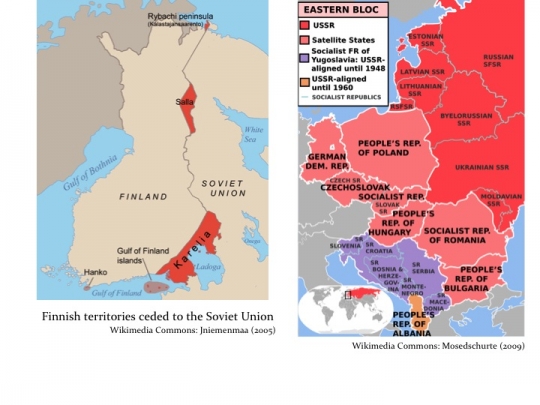
Instead of helping nations rebuild free and autonomous societies, Stalin imposed puppet rulers on Poland, Czechoslovakia, East Germany, Hungary, and others by brutally cracking down on anyone who might offer resistance or an alternative vision. Political leaders, labor union heads, religious figures, and more were imprisoned, tortured, and murdered to ensure that Stalin’s vision of a subjugated Eastern Europe was the only future possible for the lands his forces had “liberated.”
The contrast between U.S. actions and those of the USSR could not be clearer, yet critics like Walt treat this as unimportant, simply to maintain the narrative that nothing exceptional exists about America.
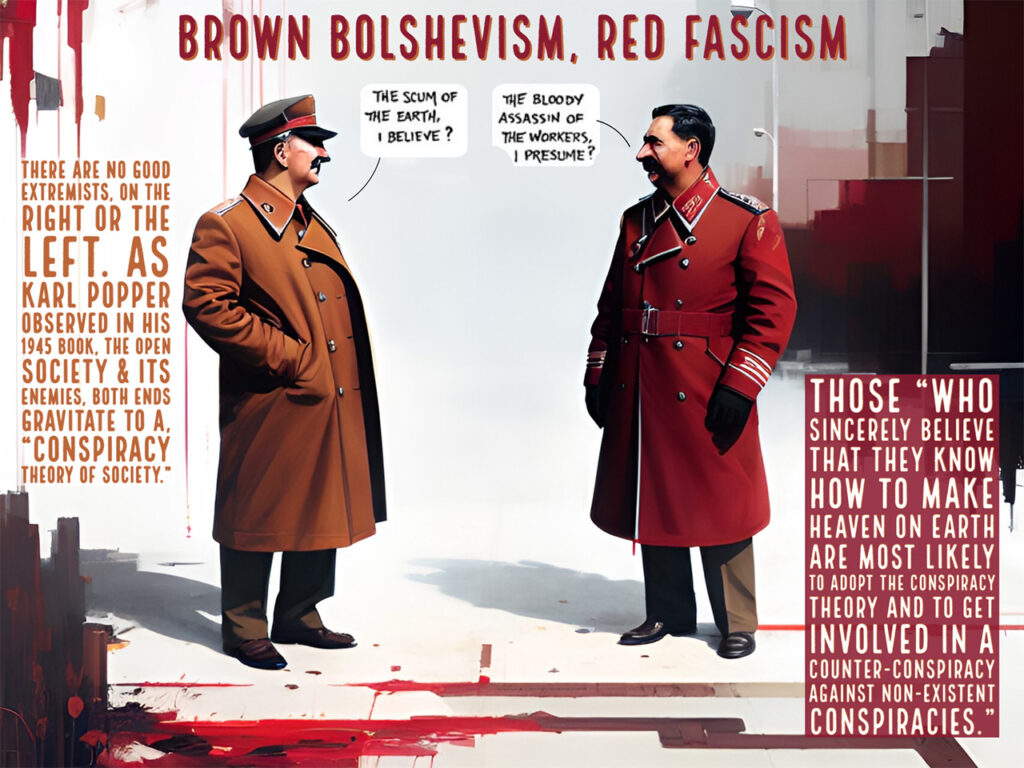
American Exceptionalism
It’s easy to dismiss American exceptionalism as arrogant or naive—something championed by people who get all their history from movies. But there are reasonable, fact-based arguments to be made.
Consider what it means to be exceptional. On May 6, 1954, Roger Bannister became the first man to run a mile in under four minutes—3 minutes, 59.4 seconds. He beat the previous record by just two seconds, but that record had stood for nine years, and many believed the four-minute mile was impossible. Yet once Bannister proved it could be done, others followed. Within three years, nine more runners had broken the mark, and today over 1,700 runners have achieved it.
Small differences can be monumental. In World War II and its aftermath, the differences between the American approach and the Soviet alternative were far from minor. It was the Americans who insisted on creating institutions like the United Nations and the World Bank to promote peace and stability. It was the Americans who put Nazi leaders on trial—documenting their crimes rather than executing them in secret. And it was the Americans who chose to help sovereign nations rebuild, even former enemies, instead of turning them into subjugated states. How is that not exceptional?
It’s time to move past the shallow talking points that lionize the Soviet Union simply because they suffered the most casualties. The truth is more complex and more tragic. The Soviets collaborated with Hitler before being forced to fight him. They made decisions that ultimately weakened their ability to fight effectively on their own. And while it’s true they helped end Hitler’s rule, they did not save millions from a horrible fate—they merely exchanged one tyrant for another.
To truly understand history and pass judgments on it, we must look beyond simple facts like body counts and easy slogans. We need to confront the reality of how nations fought, why they fought, and what they left behind once the dust settled. Such an honest assessment may not always be favorable to the United States, but it more than suggests that America is indeed an exceptional nation.

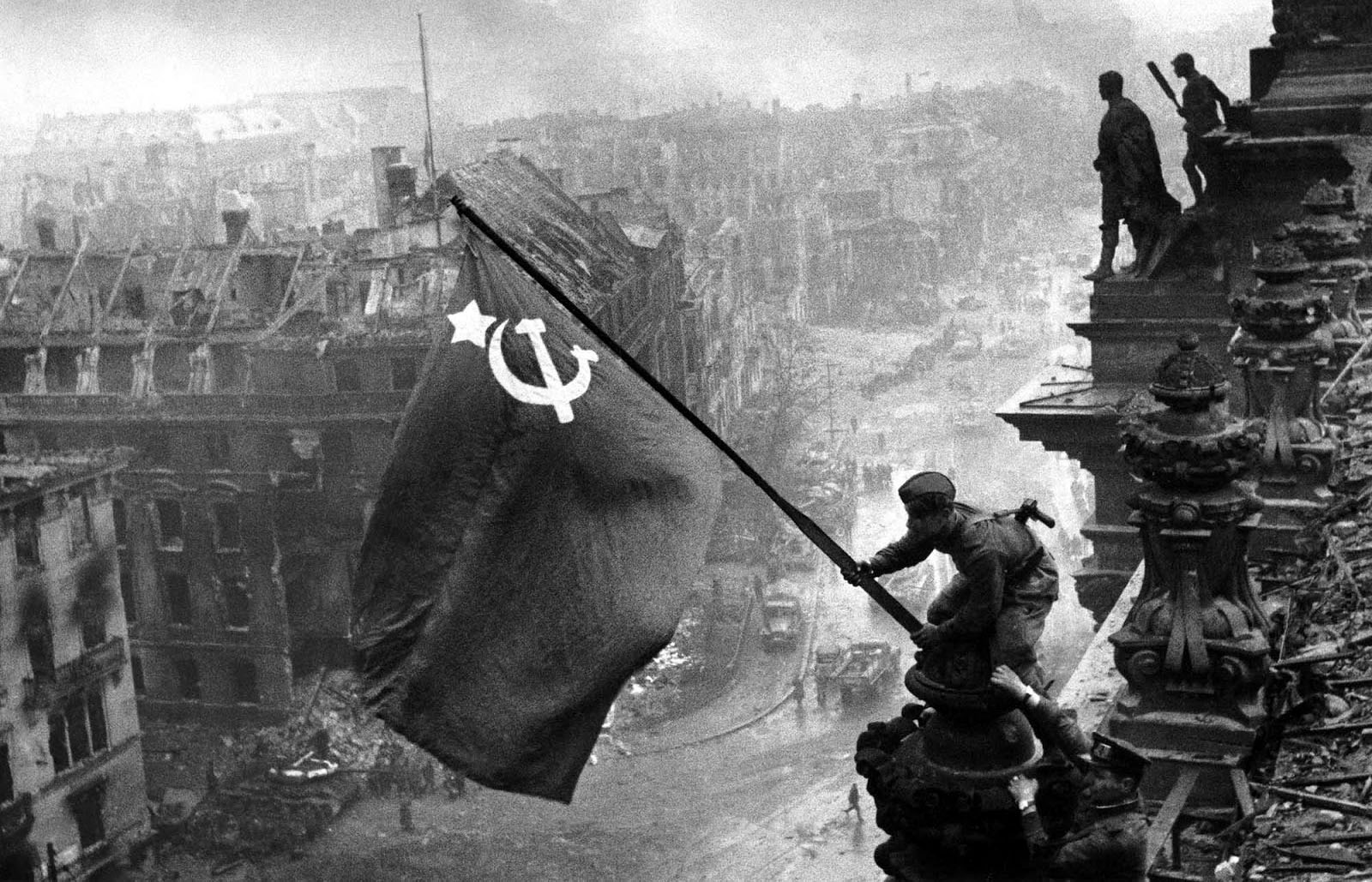

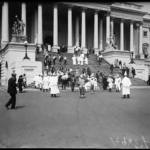


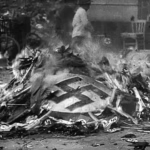
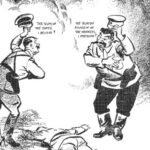



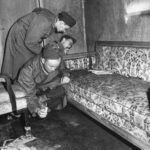
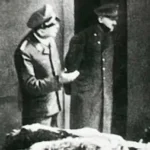
Leave a Reply